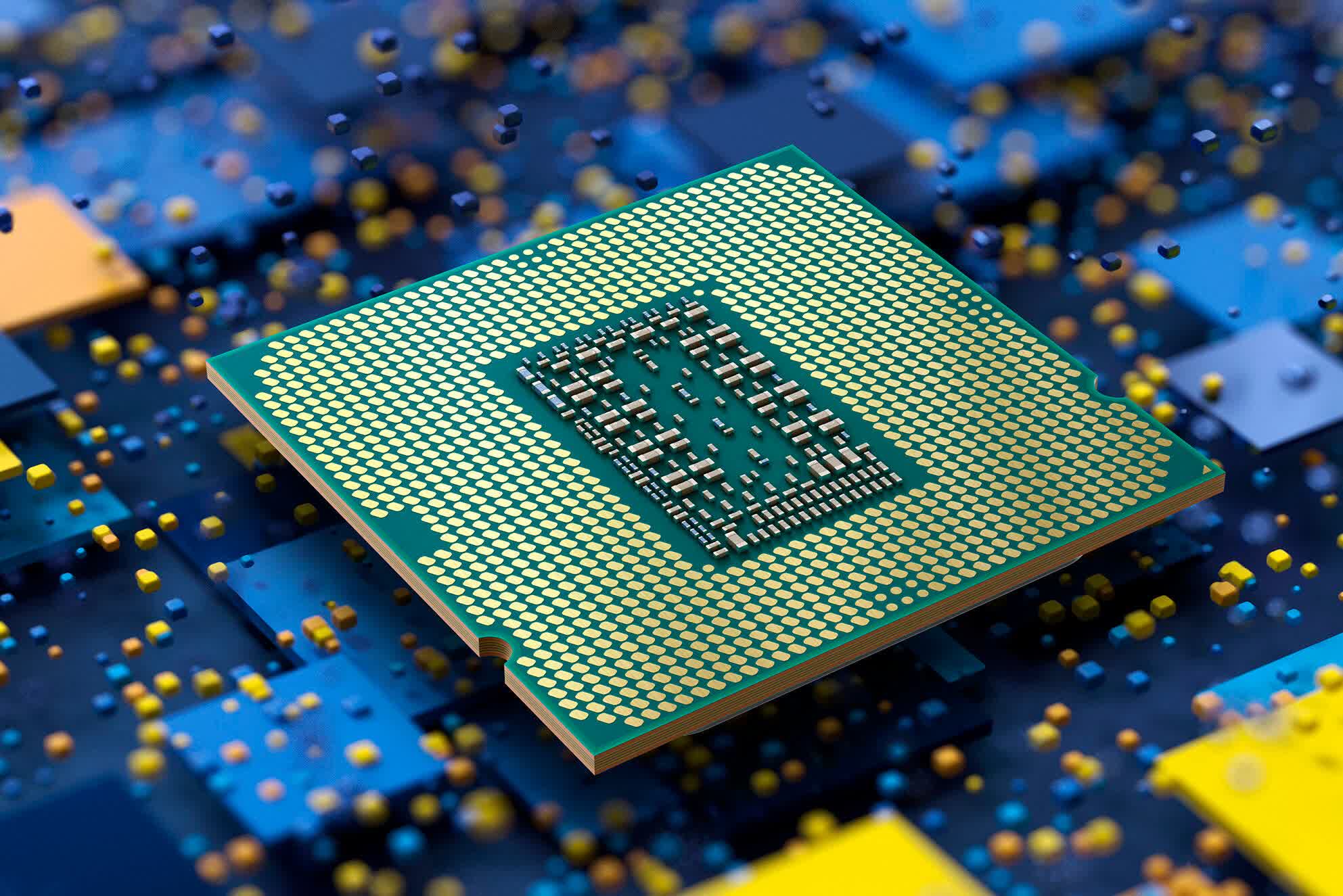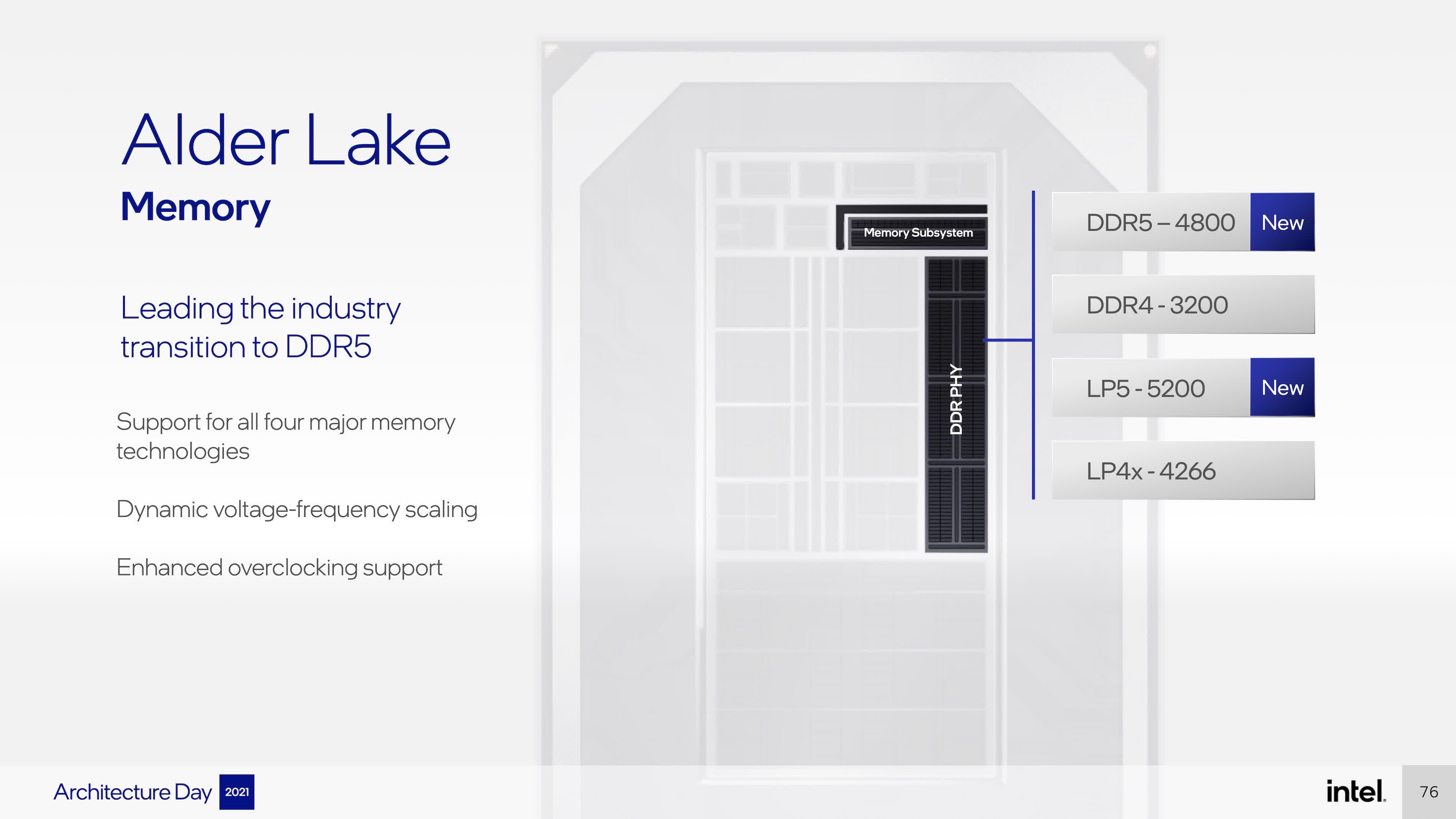In brief: We're only a few weeks away from Alder Lake's official reveal, so it should be no surprise that more leaks are surfacing online. The latest one seems to suggest that Intel's 12th generation CPUs will have a robust memory controller that will allow enthusiasts to push DDR5 memory higher than DDR4 has ever gone.

We've seen a string of Alder Lake leaks as of late, but most were related to how well Intel's upcoming Core i9-12900K CPU performs against AMD's Ryzen 9 5950X, which is the current performance king. The Core i9-12900K, at least in its early incarnations, seems to be the best desktop part to come out of Team Blue's lab in a while, but there are still too many unknowns left to make a clear judgment about its potential.
There's been a lot of speculation around DDR5 and how it will influence Alder Lake's performance in specific scenarios such as gaming. The new CPUs will support both DDR4 and DDR5, and most of the leaks we've seen so far have been from a Core i9-12900K paired with DDR5 memory.
If a new leak from Twitter user REHWK is valid, Alder Lake CPUs will come with a robust memory controller that will be a gift to enthusiasts who love to take RAM to the extreme. In the CPU-Z screenshot shared by the leaker, we also get a further confirmation for the general specifications of the Core i9-12900K, a 16-core, 24-thread part with a TDP rating of 125 watts and no AVX-512 support.
DDR5 8000!!!!!!!!
— REHWK (@hw_reveal) October 1, 2021
w/Z690 AORUS Tachyon & i9-12900K(?)@tomshardware @TechSpot @VideoCardz @wccftech @TechPowerUp pic.twitter.com/TrHD5Amg4L
In this new leak, the Alder Lake part appears to be paired with Gigabyte's DDR5-6200 memory kit on a Z690 Aorus Tachyon motherboard. By default, the DDR5-6200 memory will operate at DDR5-4800 speeds as per the JEDEC spec, with 42-39-39-77-116 timings at 1.1V. Under the XMP-6200 profile, timings are set a bit tighter to 38-38-38-76-125, but the operating voltage is bumped to 1.5V for stable operation. Otherwise, there's another XMP-6400 profile with more relaxed timings and an operating voltage of 1.45V.
To put things in context, an interesting feature that debuted with Rocket Lake is Gear modes, which are Intel's response to AMD's Infinity Fabric modes for memory overclocking. Gear 1 allows you to run the memory controller and the memory itself at the same frequency, while Gear 2 and Gear 4 allows you to run them at different frequencies. In the case of Gear 2, the memory controller runs at half the frequency of the memory, and the latter mode allows the memory controller to run at one-quarter of the memory frequency.

Alder Lake is also expected to have this feature, and this new leak suggests the memory controller on the new CPU lineup allows for ups to a 67 percent memory overclock to DDR5-8000 from the DDR5-4800 spec, with timings set to 50-50-50-100-150 for CL, tRDC, tRP, tRAS, and tRC, respectively. Notably, the overclocker achieved this using Gear 2 mode, meaning the memory controller is running at around 2,000 MHz, while the memory runs at 4,000 MHz (8,000 MHz effective speed). As of writing, the DDR4 overclocking record sits at 7,156 MHz, so this leak suggests that DDR5 should be capable of reaching higher than that right from the get-go.
Overall, it's an impressive feat that likely required some exotic cooling to pull off. One shouldn't read too much into it, as we have yet to see exactly how much of a speed benefit DDR5 brings over DDR4 and whether or not it'll be worth the price premium you'll have to pay for the privilege. At least one manufacturer plans to go beyond the 10,000 MHz barrier with overclocked modules, so it'll be interesting to see what DDR5 has in store.
https://www.techspot.com/news/91539-new-alleged-intel-core-i9-12900k-sample-spotted.html